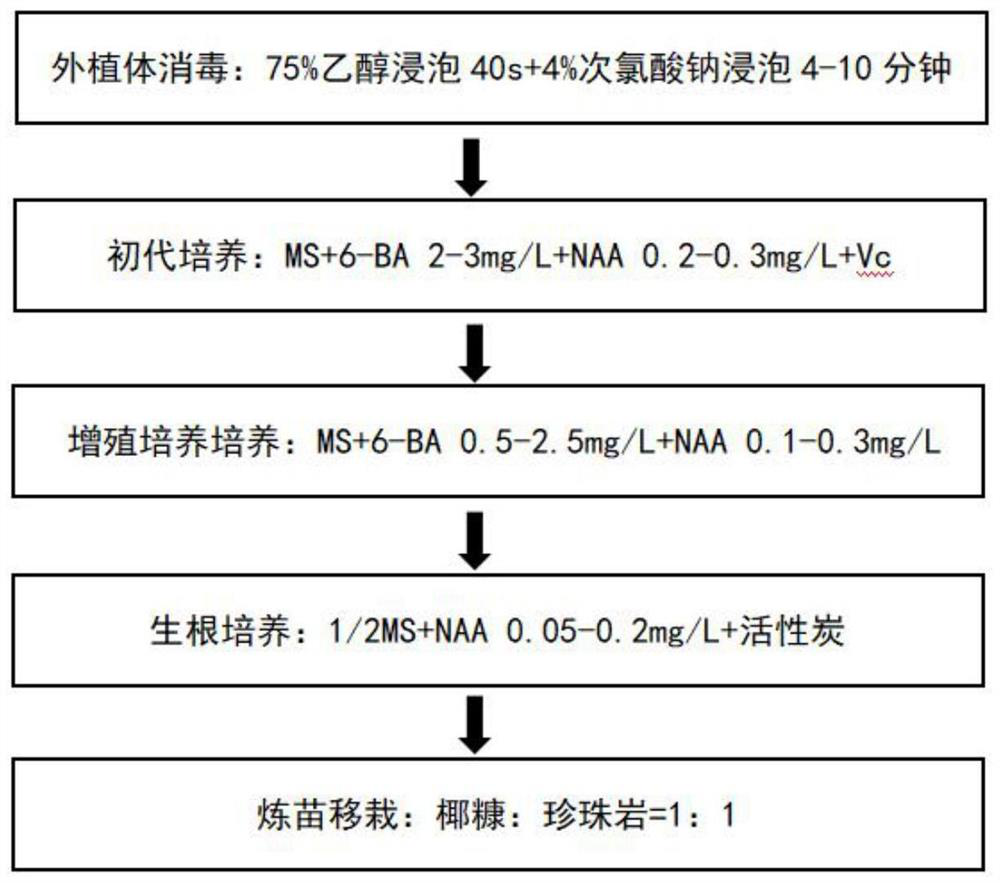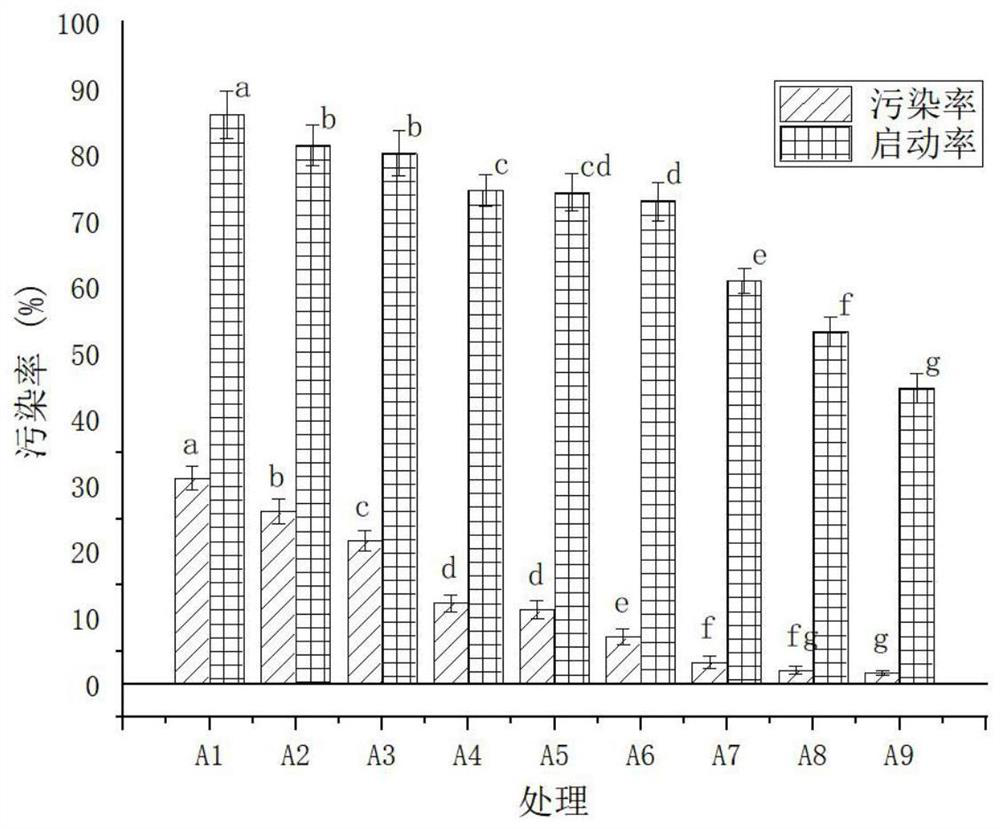Tissue culture method of edible roses
A technology for tissue culture and edible roses, which is applied in the field of plant tissue culture, can solve the problems of industrialized seedling cultivation of edible roses, low seed germination rate, and easy breeding of diseases and insect pests, etc., and achieve the goal of improving the survival rate of transplanting, growing well, and improving growth Effect
- Summary
- Abstract
- Description
- Claims
- Application Information
AI Technical Summary
Problems solved by technology
Method used
Image
Examples
Embodiment 1
[0043] Effects of Different Disinfection Treatments on the Contamination Rate and Start-up Rate of Explants
[0044] At noon in fine weather, select the branches that grow vigorously and without pests and diseases, remove the small thorns and petioles, rinse them under running water for 10 minutes, and clean the dust on the branches with a soft brush, taking care not to damage the axillary buds, and then put Add washing powder and shake it, then rinse it under running water for 30 minutes, and then do further disinfection on the ultra-clean workbench. First soak with 75% alcohol, rinse with sterile water 2 to 3 times, then sterilize with 4% sodium hypochlorite added with Tween 20, rinse with sterile water 3-4 times, dry the surface moisture of explants with sterilized filter paper , and finally cut the material into a single axillary bud stem section with a length of about 1 cm in a petri dish, pay attention to cutting the upper end flat, cutting the lower end obliquely, and i...
Embodiment 2
[0049] Effects of Different Hormone Combinations on Primary Culture
[0050] Using MS medium as the basic medium for primary culture, different concentrations of cytokinin 6-BA (1 mg / L, 2 mg / L, 3 mg / L) and different concentrations of auxin NAA (0.1 mg / L, 0.2 mg / L) were used. L, 0.3mg / L) to test, the test treatment method is shown in Table 2. 20 bottles were inoculated for each treatment, 3 explants were inoculated in each bottle, and repeated 3 times. After 30 days, the starting rate and bud height were counted.
[0051] Table 2 Hormone combinations of different concentrations in primary culture
[0052]
[0053] It can be seen from Table 3 (note: lowercase letters indicate a significant difference level of p=0.05, different letters indicate a significant difference (p<0.05)): with the increase of 6-BA concentration, the initiation rate of stem axillary buds also continues to increase ; With the increase of NAA concentration, the initiation rate of stem segment axillary ...
Embodiment 3
[0063] Effects of different anti-browning compounds on explant browning
[0064] Through experiments, it is found that the browning phenomenon is more serious in the tissue culture process of edible roses, which directly affects the normal growth of tissue culture seedlings. Therefore, this paper discusses the control effect of various anti-browning substances of different concentrations on explant browning, and the test treatments are shown in Table 6. 20 bottles were inoculated for each treatment, 3 explants were inoculated in each bottle, and repeated 3 times. After 30 days, the browning situation and growth status were counted.
[0065] Table 6 Anti-browning Treatment Test Design Scheme
[0066]
[0067] As can be seen from Table 7, the test results show that: adding vitamin CVC (0.5-1.5g / L), activated carbon AC (0.5-1.5g / L), and polyvinylpyrrolidone PVP (1-3g / L) in the medium can all be used in different To a certain extent, the occurrence of browning of stem segmen...
PUM
 Login to View More
Login to View More Abstract
Description
Claims
Application Information
 Login to View More
Login to View More - R&D
- Intellectual Property
- Life Sciences
- Materials
- Tech Scout
- Unparalleled Data Quality
- Higher Quality Content
- 60% Fewer Hallucinations
Browse by: Latest US Patents, China's latest patents, Technical Efficacy Thesaurus, Application Domain, Technology Topic, Popular Technical Reports.
© 2025 PatSnap. All rights reserved.Legal|Privacy policy|Modern Slavery Act Transparency Statement|Sitemap|About US| Contact US: help@patsnap.com



